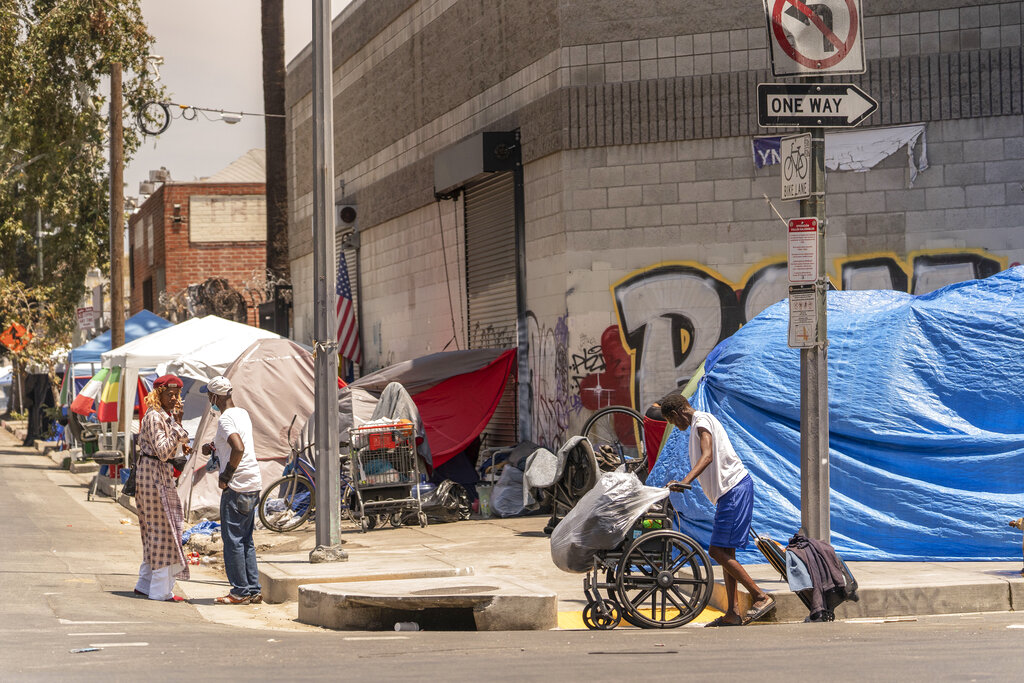The images are hard to ignore: ratty, rodent-infested, tarp tents crammed together on public sidewalks next to piles of trash, human excrement, and used condoms. That’s the daily snapshot from Los Angeles’s Skid Row.
Similar scenes have unfolded across dozens of large cities in the United States, including San Francisco, Seattle, and Atlanta, where 2,000 people sleep on the streets every night.
Homeless advocates, lawmakers, and nonprofit organizations have rushed in to address the problem, giving impassioned speeches, putting up affordable housing, and opening up their pocketbooks for the cause.
But as resources pour in to tackle the crises in larger cities, rural communities, which lack funding and manpower, are often left to fend for themselves.

“Rural homelessness is much different than what you find in urban areas,” said Merritt Moore, West Virginia’s statewide PATH coordinator. “In a city, you may encounter someone who is homeless when you round a corner, when you get off a subway. There are more emergency shelters and more feeding stations. Rural areas have fewer resources for people experiencing homelessness and fewer communal areas where we can provide and obtain information.”
Whether it’s a big city or a tiny town, the causes of homelessness are universal. Poverty, mental illness, inadequate housing, substance abuse, and domestic violence all play a role. Rural areas have the added burden of being cash-strapped and have limited access to public transportation, making it nearly impossible for the homeless to seek treatment, apply for jobs, get medical care, or obtain housing vouchers. The lack of investment in rural areas has also complicated the problem.
Another problem is stigma, Steve Berg, vice president for programs and policy at National Alliance to End Homelessness, told the Washington Examiner.
“There’s still a sense that if homelessness exists in your community, it’s because the community is doing something wrong,” he said. “Or that homeless people are doing something wrong. If community leaders in a small town are talking about homelessness existing, then they’ll be expected to do something about it. They may have a lot of other problems on their mind like the lack of hospitals, which is more pressing to a number of people.”
Berg added that a community can only look the other way for so long.
Polly Ruddick, who runs the Office of Homelessness Prevention and Intervention in Kentucky, has worked on homeless advocacy in rural eastern Kentucky for years. She recently told NPR that many elected officials seemed surprised their community had a problem.
“I had mayors and I had judge executives say right to my face, ‘My community does not have homeless people,'” she said. “And my response was, ‘Yes, you do. You just either choose to ignore it or you really don’t see it.'”
The Department of Housing and Urban Development conducts an annual homeless count across the country. The information gathered in one night affects the federal funding communities receive. Counts in urban areas are typically easier to log than in rural ones because the population isn’t so spread out. Although the 2022 Point-in-Time Count took place in January, the report HUD publishes won’t be ready until winter. Last year, the unsheltered count was canceled in many communities due to safety concerns associated with COVID-19.
PORTLAND RESIDENTS REPORT MOVING TO AVOID HOMELESS ENCAMPMENTS
Though the numbers aren’t out, the Biden administration acknowledged this summer there was a growing problem of homelessness in rural areas.
HUD released a first-of-its-kind set of aid in June, making $322 million available for communities to address unsheltered and rural homelessness — about $267.5 million for unsheltered and $54.5 million for rural. The aid also included vouchers that will “enhance communities’ capacity to humanely and effectively address unsheltered homelessness by connecting vulnerable individuals and families to housing, health care, and supportive services.”
“We have a responsibility to ensure that people sleeping in their vehicles, in tents, or on the streets, including in rural areas, have access to decent, stable housing and services like healthcare and treatment to live with dignity and safety,” Housing and Urban Development Secretary Marcia Fudge said. “Solving unsheltered homelessness means delivering help to the people who need it the most but who have the hardest time reaching it.”
In Georgia, rising rental prices and low wages have pushed waves of residents out of their homes. There are an estimated 10,000 homeless people in the state, with about one-third of them living outside of city limits.
A Georgian would need to make $14.24 an hour to be able to afford a two-bedroom apartment in a rural area, according to the National Low Income Housing Coalition. That’s problematic because the state’s minimum wage is $7.25 an hour.
Dr. Bambie Hayes-Brown, CEO of Georgia Advancing Communities Together, a statewide coalition of affordable housing groups, sponsored a series of meetings in southern Georgia to learn about some of the struggles facing the communities.
“People are doubling and tripling up,” she told Georgia Public Broadcasting, referring to individuals or families squeezing in to share housing. Hayes-Brown also said there are a lot of people who are living in tent encampments in forests or other out-of-the-way areas.
In the sleepy city of Fitzgerald, Georgia, Lethia Kittrell, CEO of the nonprofit group Fitzgerald for Change, said people are sleeping in public places and living in the woods. She said an influx of people from larger cities, attracted by lower housing prices, flooded the area resulting in a housing shortage. People who weren’t pushed out had to make do living in substandard units where safety is a concern. Others are struggling to keep up with sky-high energy bills.
CLICK HERE FOR MORE FROM THE WASHINGTON EXAMINER
Like Hayes-Brown, Kittrell said people working to solve housing concerns in small towns feel disconnected from the political and financial resources available in big cities.
The result, Berg said, could be disastrous if rural communities don’t step up and address the problem.

